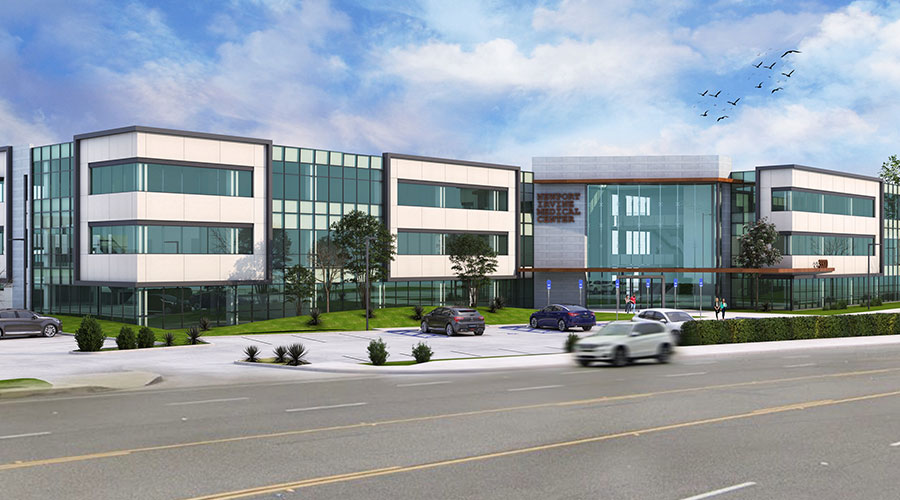The R+D Studio at KTGY Architecture + Planning has expanded the concept of shared living to include the assisted living community with its new Co-Care concept. Co-Care connects the social benefits of co-living with the opportunities to promote affordability by design through shared spaces and a cooperative lifestyle.
The Co-Care design solution addresses the growing issue of the affordability of assisted living for seniors. The Census Bureau projects that the population of Americans aged 65 and over will likely surpass 83.7 million in the year 2050. As baby boomers reach retirement age in record numbers, concern grows regarding their financial capacity to withstand inevitable lifestyle changes like the need for assisted living. The current average monthly cost of assisted living is $3,700 or higher and the costs are projected to grow as the cost of health care and medical expenses increase.
According to Marissa Kasdan, director of KTGY’s R+D Studio, “Co-Care balances shared and private spaces and encourages social interaction and cognitive stimulation, which promotes improved quality of life and longevity among residents. And, by controlling the unit sizes and incorporating both semi-private and communal spaces, residents may experience a lower monthly housing cost as well as the emotional and physical health benefits of living in a collaborative community environment.”
“The units are designed with two entry points from the internal-facing walkway, opening onto the central courtyard. Each private entry accesses a sleeping wing with two bedrooms and one bathroom. Sliding doors within the unit separate the sleeping wings from the semi-private kitchen and living area. Each four-bedroom, co-dwelling unit is approximately 1,280 square feet and is intended to house four seniors: two couples, four singles or a combination of two singles and a couple,” added Kasdan.
“Co-Care aims to keep costs down in a couple of ways,” adds Ben Seager, AIA, LEED AP, director, design, practice area leader of KTGY Architecture + Planning’s 75+ Service-Enriched Studio. “First, there are four people and two bathrooms per unit. This works out to a half bathroom and about 320 square feet per resident, which is very efficient considering each unit gets a small kitchen, laundry, living and dining spaces.”
Seager continues, “Second, the amenity package is lean. The Co-Care design includes all of the necessary spaces for services and resident lifestyle, however, they are provided in multi-purpose spaces.”
At the center of the Co-Care concept design is the ground-floor community courtyard, a koi pond and walking path that connects residents with nature, which provides a calming atmosphere. A large, communal dining area, commercial kitchen, and cafe lounge area connect to the courtyard through moveable, glass walls. Additionally, a flexible activity space, fitness and physical therapy room, and several service and administrative spaces are located at the ground level. Parking is accessed via a ramp located at the rear of the building to the subterranean level.
“At KTGY, our vision statement is ‘to move the discourse of architecture forward by continuously searching for better’ and our R+D Studio plays a big part in fulfilling this,” said Seager.
 States Move Forward to Better Protect Senior Citizens
States Move Forward to Better Protect Senior Citizens Archer and REDA to Transform Newport Beach Building into Outpatient Center
Archer and REDA to Transform Newport Beach Building into Outpatient Center Sunflower Medical Group Facing Lawsuit Following January Data Breach
Sunflower Medical Group Facing Lawsuit Following January Data Breach Nemours Children's Health Opens New Location in Lake Nona
Nemours Children's Health Opens New Location in Lake Nona Enhancing Safety at Hennepin Healthcare with a Screening System
Enhancing Safety at Hennepin Healthcare with a Screening System